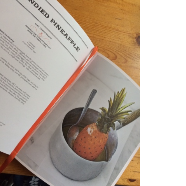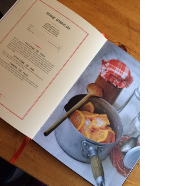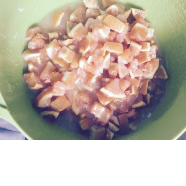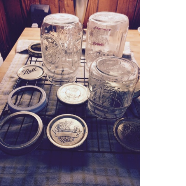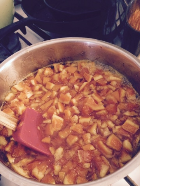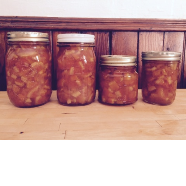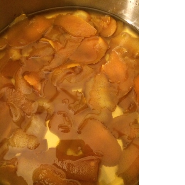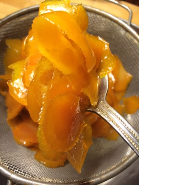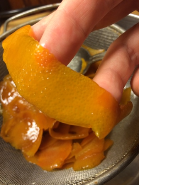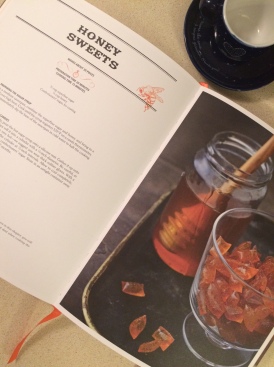 “How hard could it be? There are only 2 ingredients?”
“How hard could it be? There are only 2 ingredients?”
That’s what I said to myself, with a little bit of attitude, I admit. “There’s honey and sugar in the pantry, so I don’t even have to worry about finding some obscure ingredient!”
And the instructions were so simple and straightforward – boil the two ingredients to temperature, turn out onto Silpat, roll into a long tube, and cut it into pieces. Easy peasy!
Ha!
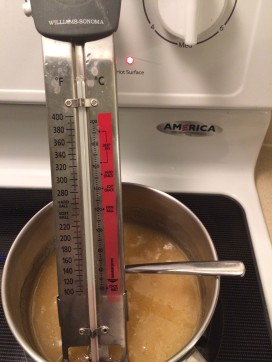
First, I burnt the mixture. Twice.
Sure, I was using my lovely thermometer. But I neglected to put the bottom of the pot into cold water, to stop the cooking process. Fail. Twice.
Can I take a minute to say how much I detest electric ranges? I’ve adjusted to a lot since this move to Florida, but I will never get used to cooking on an electric stove top. It’s. The. Worst.
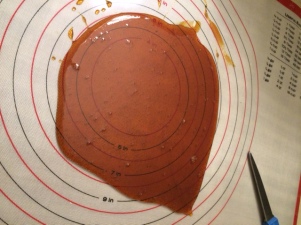
Next, pour it onto the Silpat. Beautiful! Though I was a little worried about how liquidy it was. I expected this to start forming into a chewy ball on it’s own.
Oh well. It will work out. The next step says to roll it into a ball. The mixture is “quite warm,” so they recommend wearing rubber gloves. I only had regular kitchen gloves available, so that’s what I used.
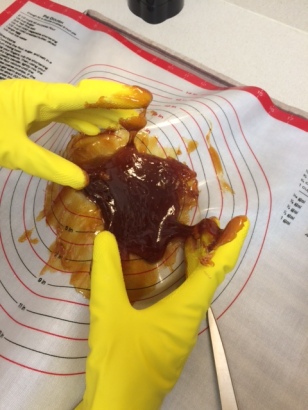
Disaster! This mixture did not want to roll itself into a ball or a log or any other shape. It stuck to the gloves mercilessly. (It’s honey and sugar, what was I expecting?!) It pulled at the Silpat – and nothing ever sticks to that stuff!
What to do? I ditched the gloves, and had a glass of wine while I contemplated how this little two-ingredient recipe had gone wrong. There’s not much to mess up.
Turns out, all it needed was a little time to cool off. Once it had cooled a bit, it pulled together into a ball with ease. And no gloves required!
Roll it into a log. Cut into little pieces. Work fast here, because as it cools, it gets much harder to work with.

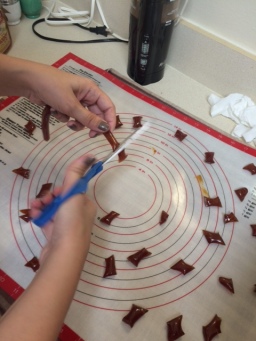
Once they’re fully cooled, coat them in confectioner’s sugar, and keep in an air-tight container.
So, these were good. But I would only recommend eating them if you need to remove a tooth or a filling or something. They’re unbelievably sticky. We couldn’t even eat them all. But they’re really pretty, and probably would make for a lovely gift.
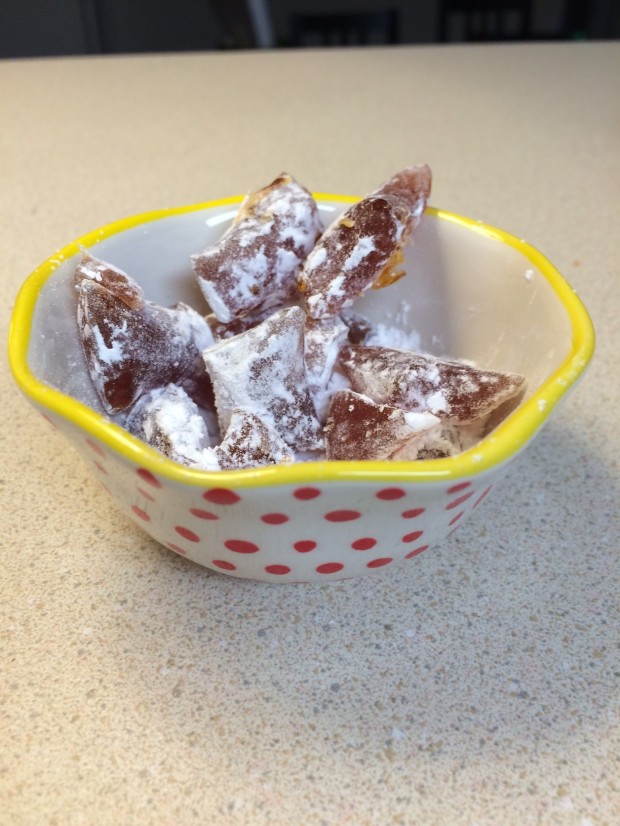
Also, I need to work on my food photography. ‘Cause it’s terrible.
Onwards!
